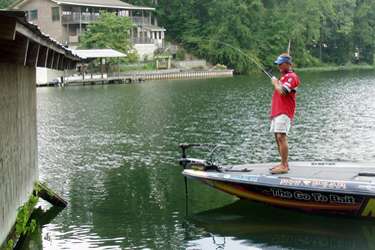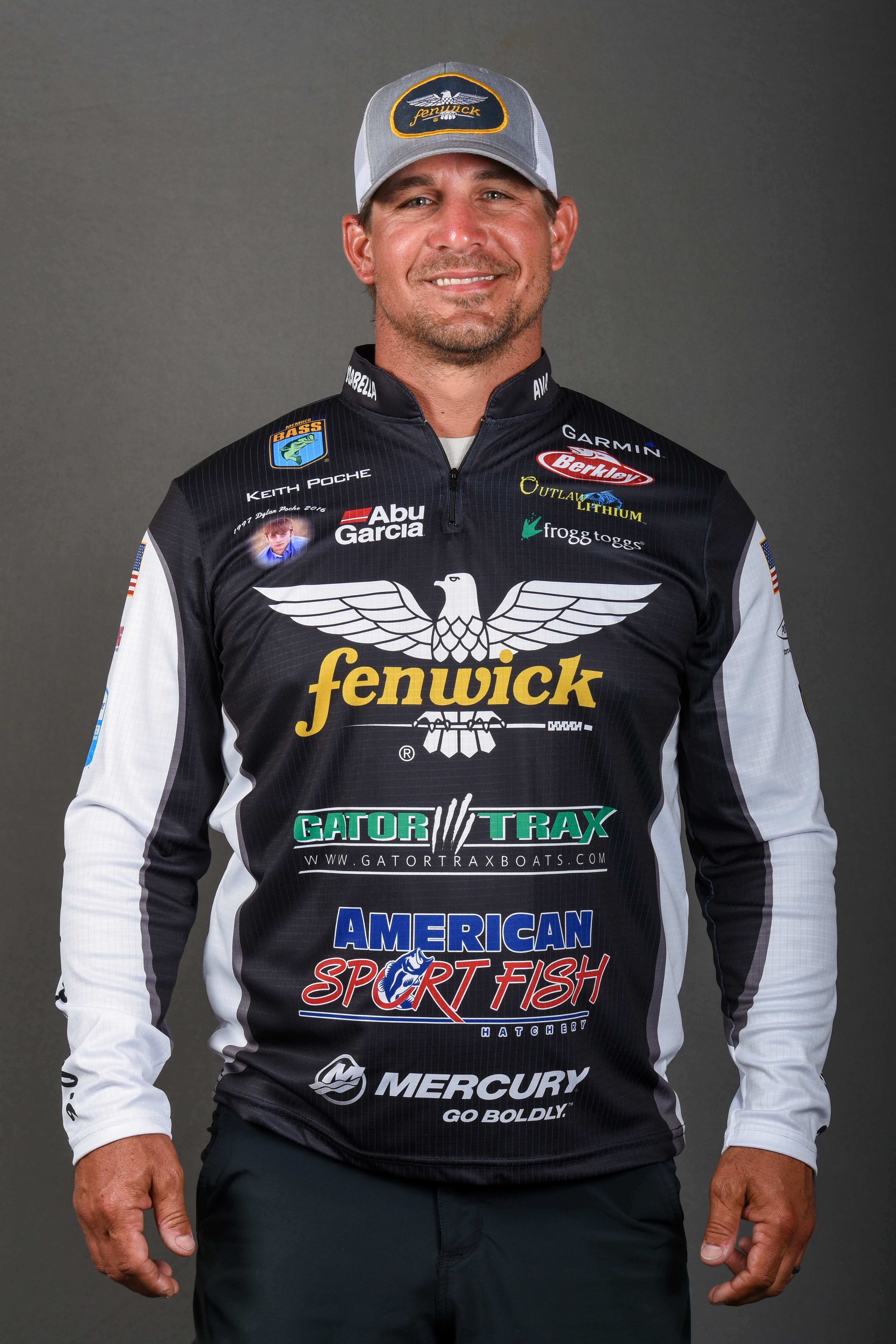
When most anglers think of flipping and pitching, they think of heavy cover, heavy lines and big, heavy baits. I used to be the same way, but that was before I realized I could take the basic concepts of flipping and pitching and turn them into finesse tactics. Now I use light line and finesse baits for a lot of my flipping and pitching, and I'm catching more bass than ever.
The reason flipping and pitching work so well is that there are always (or almost always) some bass in shallow water, and when a bass is in shallow water, he's often there to find something to eat. That doesn't mean he wants something big, like a traditional flipping jig or giant creature bait. Sometimes those bass are targeting smaller forage or are shallow because there's more cover there or oxygen levels are higher.
You're usual flipping gear won't work with finesse flipping and pitching. It's too heavy. I like a 7- to 7-foot, 2-inch Big Bear rod with a medium action for my finesse work. The lighter action helps to absorb the shock when you set the hook and will prevent you from breaking off fish. This is critical because of the line you'll be using.
I do most of my finesse flipping with 10-pound-test Berkley Trilene 100% Fluorocarbon line. If the cover's really heavy, I might scale up to 12, but 10 is less visible and gives your baits better action.
My reels are Abu Garcia Revos with a 6.4:1 gear ratio. You want the high speed so you can get your bait back quickly to make another pitch or flip. It also helps when a bass takes off with your bait and you need to pick up the slack and set the hook.
My three go-to baits for finesse flipping and pitching are (1) the NetBait T-Mac, a 6 1/2-inch Trick Worm-style bait, in junebug, (2) the NetBait Finesse Worm, a smaller straight-tailed worm, in Okeechobee Craw, and (3) the NetBait Baby Mad Paca, a small creature bait, in Bama Bug. Those three lures give me enough variety in terms of profiles and sizes that I'm confident one of them will get bit.
I use a 2/0 hook for everything when I'm finesse flipping and pitching.
For each of these baits, I usually use a 1/8- to 3/16-ounce sinker. Occasionally, I may go up to 1/4-ounce in heavy cover, but that can defeat the purpose of finesse flipping and pitching. I want a small profile, a light weight, a slow falling bait and a very natural presentation. That's the finesse part, and that's what gets bites.
Where should you finesse flip and pitch? In lots of the same places where you do your regular pitching and flipping, but also in places where the cover's not so thick, the water's not so dirty and the fish might be a little more spooky. Finesse pitching and flipping is perfect for those situations where other people don't think about flipping and pitching.
One of my favorite types of cover for this technique is boat docks. They hold lots of bass, including some big ones, and few people fish them really well. Once you get the hang of finesse flipping and pitching, you'll be able to put a bait into spots around boat docks that other anglers can't reach. That makes a big difference.
I like to make extra long pitches with my finesse presentation. On waters that get a lot of pressure, staying back from your target is important. So is turning off your electronics. You won't need them anyway since you're mostly presenting your baits to shallow, visible cover. The noise of a depthfinder can turn off shallow bass.
What makes finesse flipping and pitching work? You're going to make a super quiet presentation to a shallow water fish using a finesse bait and light weight. He won't know what hit him! These bass have all seen spinnerbaits, buzzbaits, square-billed crankbaits and other power presentations. When that little worm with the 3/16-ounce sinker slowly drifts by, they won't be able to resist it.
Since you're usually fishing for pressured bass, don't forget that the first word in finesse flipping and pitching is "finesse." I catch a lot of bass by pitching to a spot and letting the worm soak there for several seconds before barely twitching it to life. Sometimes that's what it takes, but you're better off to fish that way and get five or 10 strikes than to go heavier and hope for just three or four.
Remember, flipping and pitching doesn't always mean stout rods and 65-pound-test braided line. You'll get more strikes and catch more bass if you scale back and finesse them!





